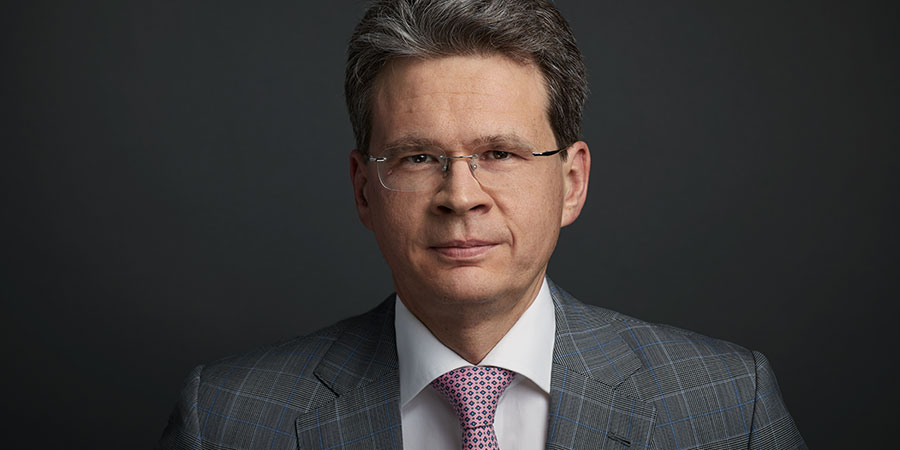Andrew Clifton: “ESG Risk Factors Are a Way of Assessing Value Traps in Value Investing”
| For Meritxell Sedo | 0 Comentarios

Over the past ten to fifteen years, value stocks have fallen out of favor with the markets, dramatically underperforming the market. However, according to Andrew Clifton, Portfolio Specialist for the T. Rowe Price Funds SICAV Global Value Equity Fund strategy, from the last quarter of last year, the stars began to align for a recovery in value stocks following the announcement of vaccine developments and the hope of reopening economies and growth, against a backdrop of extremely accommodative monetary and fiscal policies.
The valuation discounts with which stocks have been penalized have been as extreme as those seen almost 20 years ago, with the technology, media, and telecommunications (TMT) bubble in the late 1990s.
Furthermore, the market environment has been positive for value stocks. The strong sell-off experienced in the first quarter of 2020 created opportunities for value managers. Value stocks have clearly rallied over the past 8 – 9 months, particularly since early November. But at T. Rowe Price they still believe that allocations to value equities will continue to generate good returns thanks to the available opportunities and the fact that their fundamentals remain positive.
Examining the potential of value stocks requires taking a long-term perspective. Much of the market only looks at what has happened in the last 10 to 15 years, but if you look over a longer period, value stocks have been generating positive returns for many decades.
According to T. Rowe Price, the last decade, in which value investing has performed poorly, has been the anomaly. So rather than thinking that the value approach is a temporary affair which only works occasionally, many investors need to realize that value investing has a solid foundation and fundamentals. Basically, if you can buy a company for less than its fundamental value, you are talking about a sound investment foundation.
From a tactical point of view, stocks have rallied, but the environment remains quite positive for value. are still trading at a material discount to their longer term 15-year average levels. Also, if you assess the market’s valuation dispersion, it has narrowed from last year’s extremes but is still above normal levels.
In terms of valuation, the expected price earnings multiple over the next 12 months for the MSCI World Value is 16 times, compared to 30 times for the MSCI World Growth. Therefore, there is still a large gap in valuations across all markets globally. Value continues to trade at a discount to growth, which provides a good opportunity for value investors.
Looking at fundamentals and momentum, economies are showing signs of rising inflation over the next 12 to 18 months. The debate now centers on whether it will remain high or whether it will be only transitory. Interest rates will most likely start to rise over the next 2 years. The financial sector is a key player in the value universe and banks are the main beneficiaries of an improvement in interest rates as long as economic fundamentals remain positive.
The Importance of Interest Rates
Technically, if interest rates start to rise, it will reduce the future value of the more distant cash flows which are used to value companies. Many of the growth companies are not generating profits now but are banking on their potential long-term earnings. If interest rates rise, so will discount rates, but it should lessen the attraction of companies that have a long duration and instead favor those companies that are currently generating good levels of return, and this criterion applies to many value companies.
If interest rates cannot fall any further, the debate centers on whether they can either remain at their current levels or increase, the financial sector could benefit in both cases. In the case of banks, at T. Rowe Price they still believe that many banks, particularly in the U.S., will continue to have attractive valuations, as the economy improves, they can generate more capital and growth, and their valuations are already attractive at current levels. To some extent, there is a free option on the possible increase in interest rates at some point. According to the expert, it is not something that will happen overnight, but at some point, it will come to that because interest rates cannot fall below current levels.
Types of Value Stocks
Looking at the higher quality stocks, those that are referred to as “free cash flow” companies because of their ability to generate cash flows, are companies with good balance sheets that are going through a period of greater uncertainty or a problem that has raised concerns in the market. This provides an opportunity for T. Rowe Price’s managers who are looking for these types of opportunities in sectors such as pharmaceuticals or healthcare, where there may be some concern among some companies about losing patent protection or the possibility that drugs in development may not generate the expected profits in the future. At T. Rowe Price they work with analysts to understand the reality of a market and if they perceive that there has been an overreaction, new positions would be added to the portfolio.
Other examples of stocks with high cash flow generation are the utilities, which may have a more defensive bias, but may face uncertainty regarding regulation or capital allocation, and the consumer staples sector, where there may be concern about new market entrants.
On the “Deep Value” side are companies with lower balance sheet quality and higher levels of risk which, even if they have been bought at a significant discount, still have the potential to fall in price if the situation worsens beyond expectations – sometimes these are not just operational risks, they can also be financial or strategic risks, which is why at T. Rowe Price they strive to understand them better than the rest of the market. However, should the situation develop positively, they also have greater upside potential. When the strategy favors a greater weighting in “Deep value” stocks over cash flow generating stocks, they are trading a higher level of risk for greater upside potential.
Positioning by Country and Sector
Since the global economies began their reopening process, the T. Rowe Price Funds SICAV Global Value Equity Fund strategy has had greater exposure to emerging markets, Japan, and Europe and a lower weighting to the United States. The main reason behind this positioning is the greater efficiency of the US market in reflecting the recovery of the economy in share prices.
At approximately two-thirds, the US has a dominant position in the MSCI World Value index. However, at T. Rowe Price they prefer to include some exposure to emerging markets, with around a 10% weighting. The lower weighting of the US against the index funds their position in emerging markets.
By sector, they have maintained an overexposure in the financial sector since the launch of the strategy. T. Rowe Price believes that the market structure is particularly positive for US banks, in stark contrast to their counterparts in Japan and Europe.
The IT sector generally has a growth bias, but this does not imply that T. Rowe Price’s strategy does not have exposure to some segments. For example, the semiconductor industry has undergone structural changes that have not been appreciated by the market, which has continued to value them as cyclical companies. This is something that the management company has perceived as an opportunity. They have recently reduced their portfolio exposure from 10 to 6 names, the main reason being that valuations are already at their peak, with little upside left.
The Inclusion of ESG Factors
Value investing tends to have a higher ESG risk by its very nature, because it is more likely to have a higher carbon footprint, for the production of real assets, or to have a higher volume of fixed assets than a growth company, in which patents and software development have a greater weight. This increases the importance of integrating ESG criteria into the investment process. To this end, T. Rowe Price has an integrated team of ESG analysts.
When it comes to managing downside potential, there is always a risk of falling into a “value trap”. This risk is increased when investing based on valuations and ESG risk factors are one way to assess these value traps. In some cases, the market may overly penalize a security, presenting opportunities to invest. One example is Volkswagen, which a few years ago was embroiled in an environmental and ethical scandal over its vehicle emissions, but over the years its business model has undergone a transformation, and T. Rowe Price believes it will be one of the winners in the electric vehicle market.












